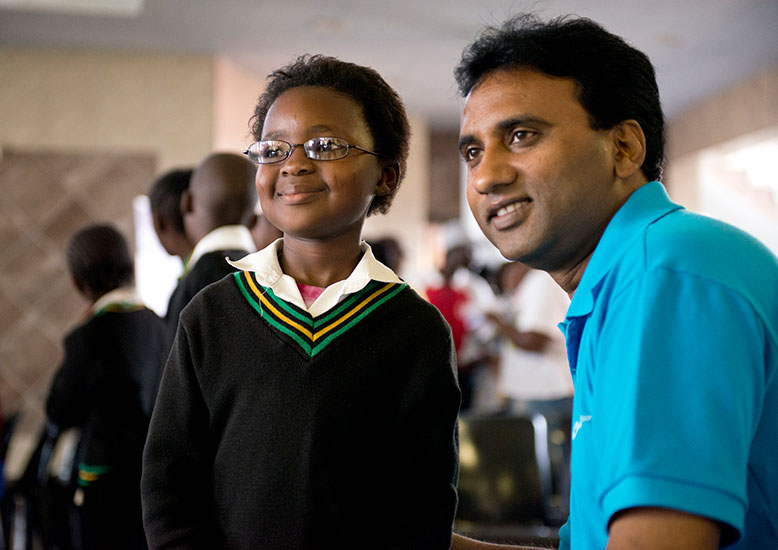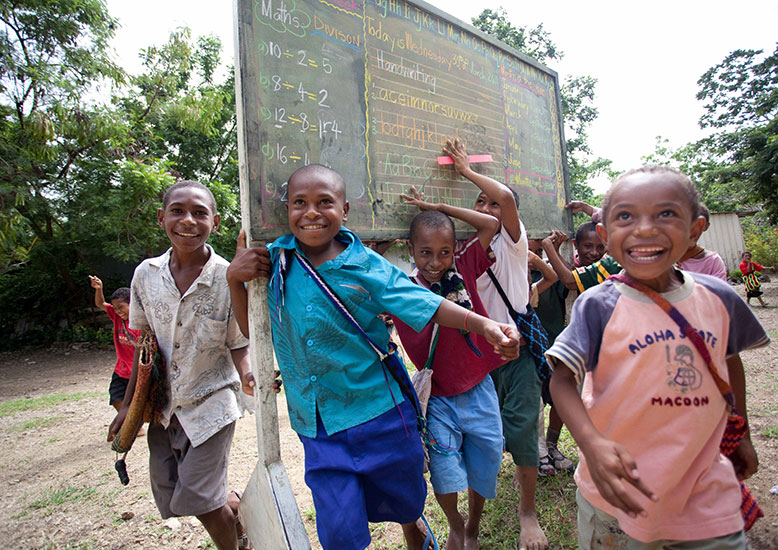Key milestones
Children are the future
OT speaks to Professor Kovin Naidoo about the Our Children’s Vision initiative, which aims to provide eye care to 50 million children globally by 2020

18 July 2017
01. The purpose of the Our Children’s Vision campaign, which was officially launched in April 2016, is to upscale, accelerate and expand access to eye health services to more children, in more locations, around the world.
The Brien Holden Vision Institute has been conducting eye health programmes, particularly school eye health programmes, in various parts of the world for many years, along with many other organisations. However, it was evident that we were only achieving success in isolated areas, leaving other areas in despair.
Wanting to ensure access to eye care for all children everywhere, and address the global impact of conditions such as myopia, we began exploring how we could reach more young people around the world. The Our Children’s Vision initiative was launched as a direct result and focuses on achieving this goal through strong partnerships with organisations, governments and societies.
02. Partnering with organisations around the world is key to the success of this initiative and being able to launch with Essilor’s Vision for Life as a founding partner helped immensely.
Since then we have secured strong support from a number of organisations, including the World Council of Optometry (WCO), the International Council of Ophthalmology and the International Agency for the Prevention of Blindness.
A primary reason for the establishment of this campaign was the understanding that the Brien Holden Institute, as one institution, could not upscale our work to the level required, especially when data informed us that refractive error was going to become one of the biggest public health challenges of the future. Therefore, having managed to attract 70 partners in around 60 countries worldwide since we launched has been amazing and is well beyond our initial expectations. These partners are driving the implementation of national eye care programmes to ensure that children have access to eye care.
Through these partnerships, we are particularly proud of having been able to engage with non-eye care players. For example, we are currently conducting research in collaboration with the World Bank, and we are in discussions with major organisations providing school level interventions about possible collaborations.

03. In our first year, our target was to reach seven million children. In fact we reached 10 million.
While this is positive we must still remain focused on our goals, which are to influence national policy in the countries where the campaign is present to ensure that a sustainable solution to children’s eye health is developed, rather than a short-term service delivery programme. This means that a significant amount of the on-going work of the initiative is to convince governments that eye health is critical to education and that school health programmes are the right vehicle for promoting it. To date, that response has been varied, but in those countries where we are engaging with governments, we are working with them to change national policy and focus on school programmes. These programmes include more than just eye care, they include health promotion, which is critical if we are going to be able to tackle the issue of myopia before it becomes an epidemic.
04. With the first stage of this initiative – reaching out to professional associations – now complete, we have moved on to stage two, which involves reaching out to private sector optometrists and ophthalmologists in collaboration with the WCO and Optometry Giving Sight.
Through this approach, we hope to build a reality where every optometrist in the countries that partners are present adopts a school close to where they are based and provides eye care to children in that school. While we can help raise funds to support practitioners in providing eye care and spectacles within some of the poorer communities, we are also hoping that the practitioners themselves will fundraise too.
We are starting this phase of the campaign now and know that it will be much more complex to achieve than the first was because we are dealing with the individual.

05. Come 2020, success would be having reached in excess of 50 million children, with children’s eye health and school eye health policies established in at least 60% of the countries that Our Children’s Vision is active in.
The main purpose of this campaign is not to replace systems, but to ensure that national services are provided and that we educate around the importance of eye care.
Through this campaign, we also want to see the private sector come to the party and provide more affordable eye care options. And while it’s important that governments provide eye care for the the most marginalised, it’s also important that the private sector creates affordable options for those who have limited income.
Advertisement


Comments (0)
You must be logged in to join the discussion. Log in